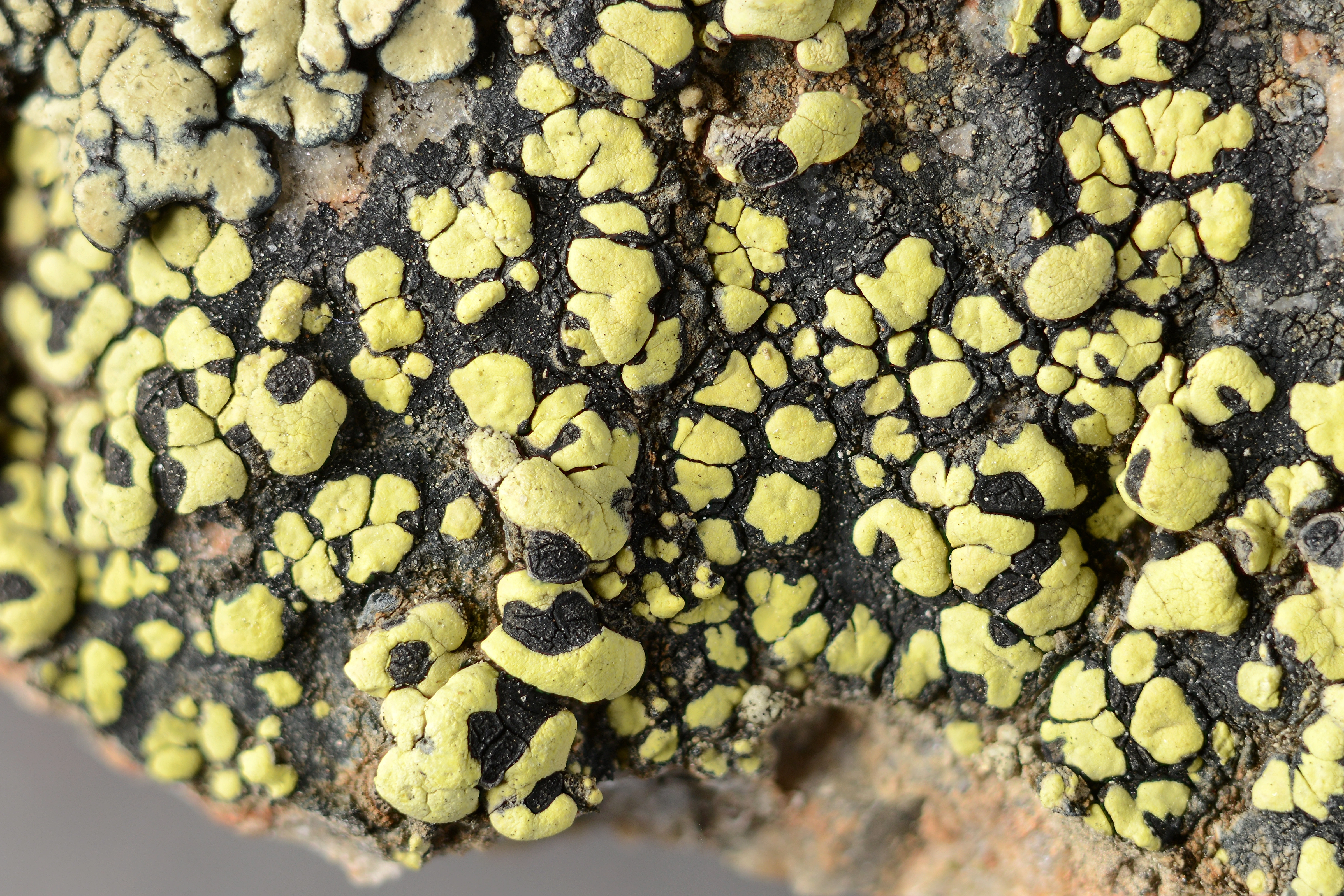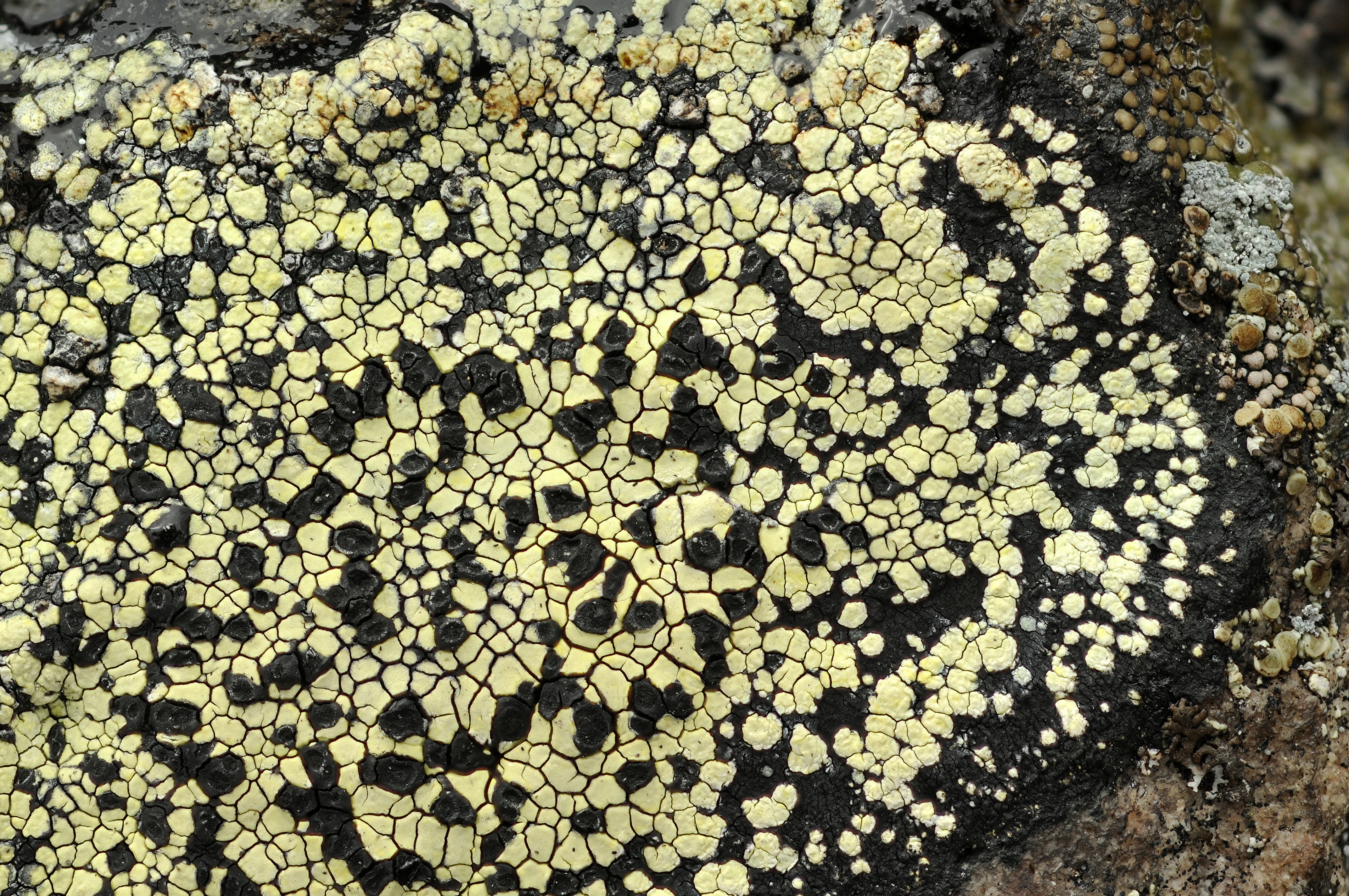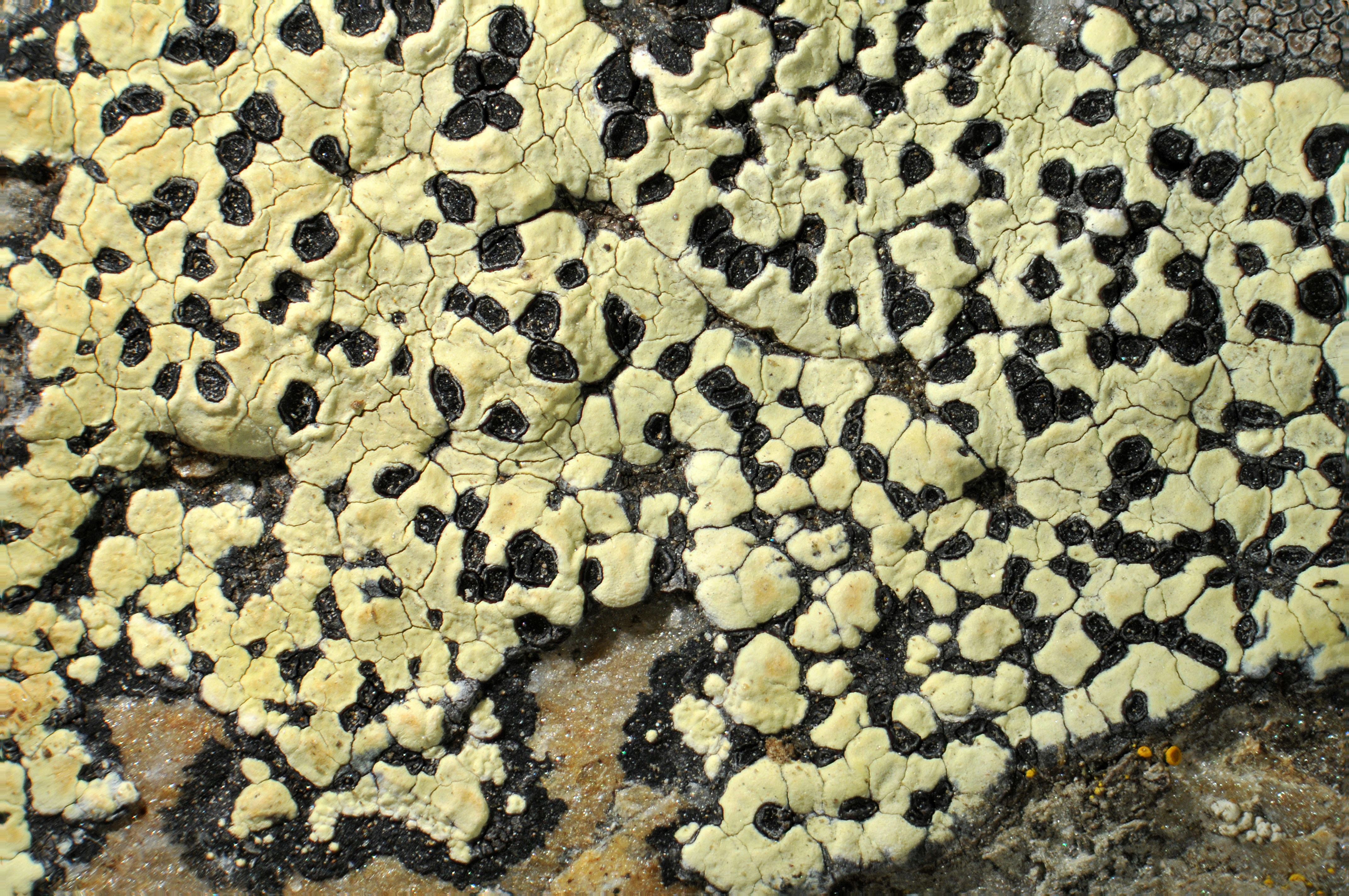Rhizocarpon macrosporum
- Innhold
- Morphology
- Chemistry
- Habitat
- Comment
- Look-alikes
Morphology
Thallus areolate, up to 15 cm diam.; hypothallus well developed, black; areolae up to 1 (–1.5) mm diam., greyish yellow or greenish yellow, dull to slightly shiny, contiguous to scattered, irregular to orbicular or angular, plane to strongly convex, smooth; medulla KI+ dark violet.. – Apothecia up to 1 mm diam., black, epruinose, angular to orbicular, plane to concave or slightly convex, usually persistently marginate; excipulum with a dark brown rim and a paler brown inner part, K+ red; hypothecium dark brown, K–; hymenium colourless or faintly green; epihymenium green or brown, K– or K+ red; no crystals or granules in the apothecia; ascospores 8 per ascus, eumuriform, dark brown, 30–50 × 12–22 µm. – Conidiomata not seen.
Chemistry
Four chemical strains are known from Norway, containing rhizocarpic acid and 1) barbatic acid, 2) psoromic acid, 3) stictic acid, or 4) no additional lichen substance; spot tests: medulla PD– or PD+ yellow/orange, K– or K+ yellow, C–.
Habitat
On open rock, especially at sites exposed to dust impregnation. In the lowlands, rarely collected.
Comment
This poorly understood species differs from R. geographicum mainly in having larger ascospores. The other large-spored, yellow species, R. saananse, differs in forming larger, more bright yellow, often pruinose areoles and often pruinose hypothallus.


